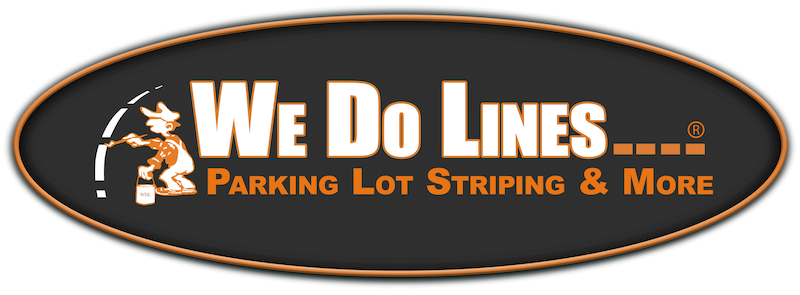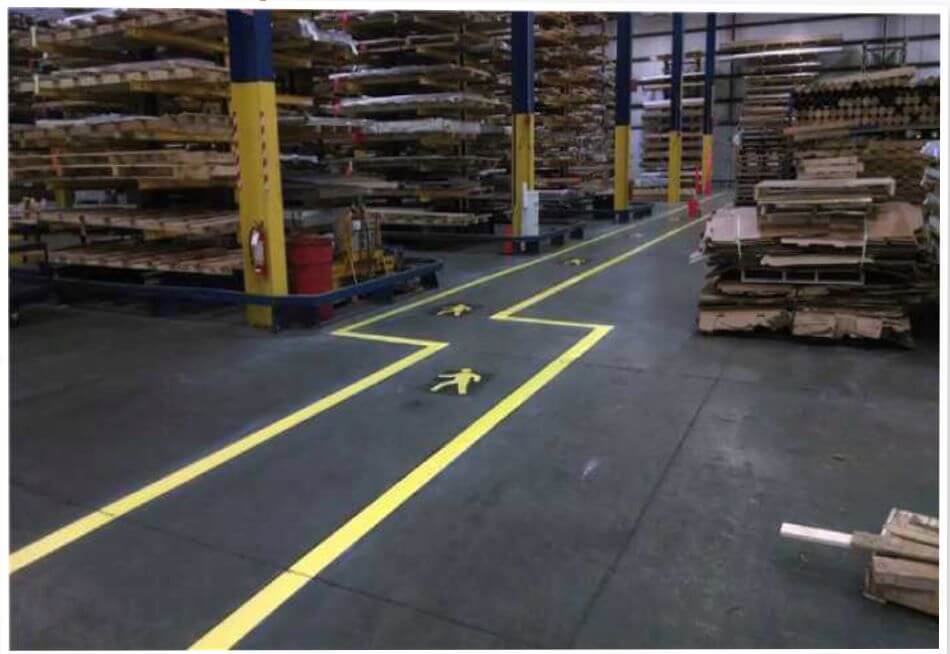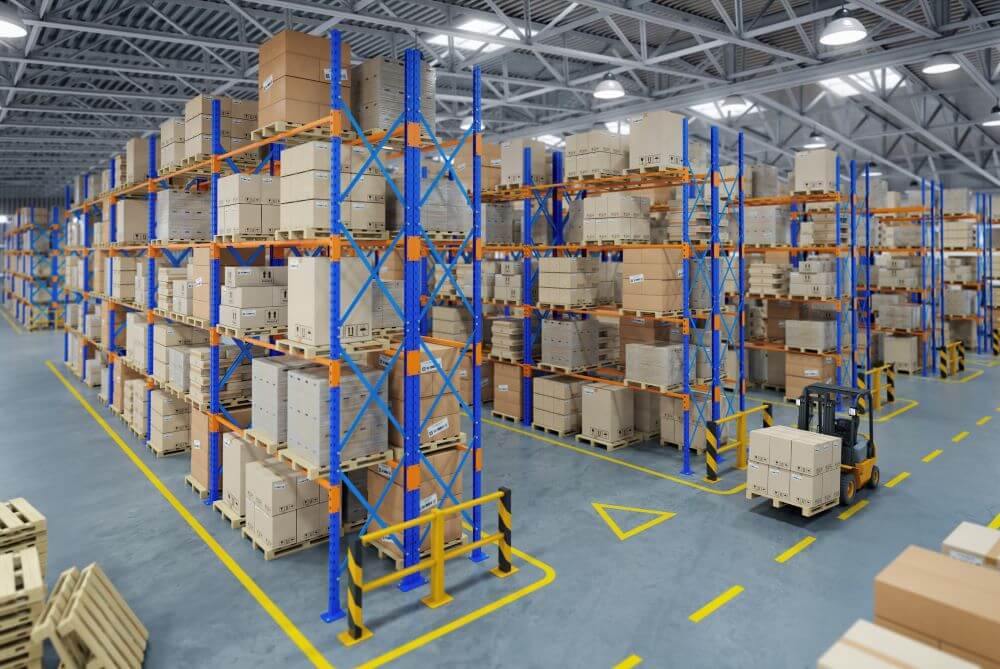In the complex and dynamic environment of warehouses, maintaining safety is paramount. The Occupational Safety and Health Administration (OSHA) plays a crucial role in setting guidelines to ensure safe working conditions, emphasizing the importance of measures such as floor striping and clear visibility. These practices are not just regulatory requirements but are foundational to creating a safe, efficient, and compliant warehouse environment. This article delves into the significance of striping and visibility in warehouse safety, exploring their impact on employee safety and regulatory compliance.
Warehouse Hazards
Warehouses are fraught with potential hazards, ranging from the risk of slips, trips, and falls to the danger posed by moving equipment and vehicles. Poorly marked pathways and obstructed visibility can lead to accidents, injuries, or even fatalities. The presence of hazardous materials further complicates safety protocols, requiring clear demarcation and signage. Recognizing these risks is the first step in mitigating them, underlining the need for comprehensive safety measures tailored to the warehouse environment.
The Role of Striping in Warehouse Safety
Warehouse striping is the practice of applying lines, symbols, and patterns to the floor, designating specific areas, pathways, and zones. This visual management tool is indispensable in delineating spaces for various uses, including pedestrian walkways, vehicle lanes, storage sections, and areas that require caution. The benefits of effective warehouse striping are multifold:
- Accident Prevention: By clearly marking designated areas and pathways, striping significantly reduces the risk of accidents. It guides the movement of employees and machinery, preventing collisions and ensuring safer navigation through the warehouse.
- Operational Efficiency: Striping contributes to a well-organized warehouse layout, streamlining operations. It aids in the optimal placement of goods and the efficient movement of people and products, thereby enhancing overall productivity.
- Hazard Communication: Effective striping includes marking areas that could be potential safety hazards. This preemptive measure ensures that employees are constantly aware of risks, allowing them to take necessary precautions.
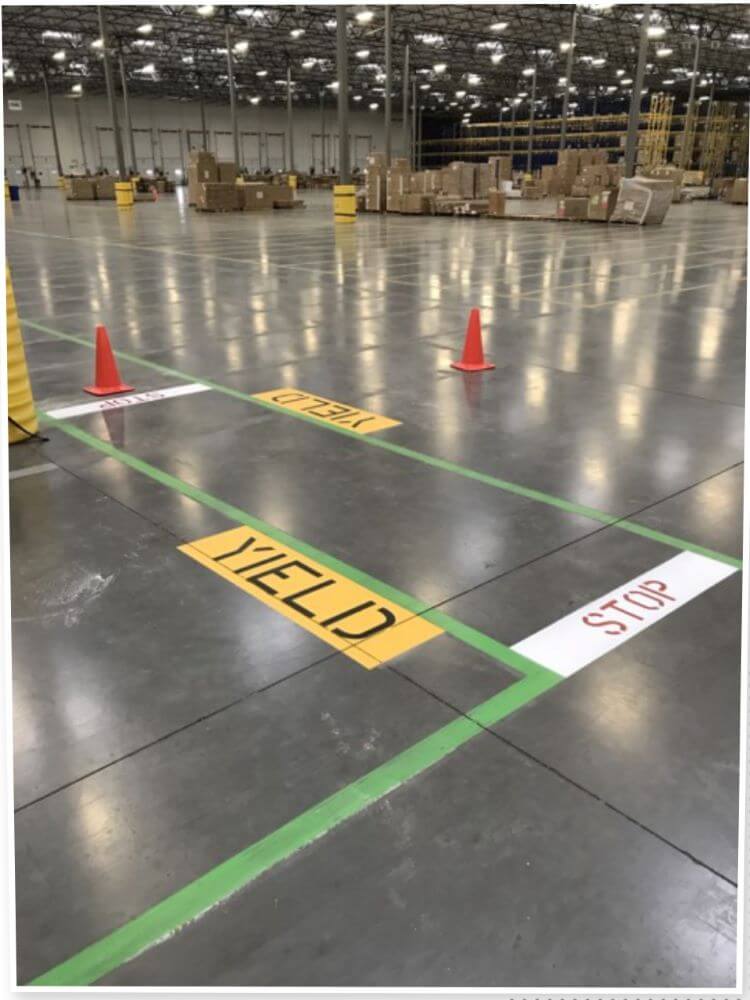
Clear Visibility and OSHA Compliance
Clear visibility is at the heart of OSHA’s guidelines for warehouse safety. Adequate lighting and visible markings are essential to prevent accidents and ensure a safe working environment. OSHA’s regulations underscore the need for floor markings to be clear, well-maintained, and reflective of the warehouse’s operational layout. Compliance with these guidelines serves several critical functions:
- Minimizing Workplace Injuries: Ensuring that all sections of the warehouse are well-lit and markings are visible reduces the likelihood of injuries related to slips, trips, and falls. It allows employees to easily recognize and navigate around potential hazards.
- Protecting Against Legal and Financial Repercussions: Adherence to OSHA’s standards safeguards businesses from fines and legal challenges. Demonstrating a commitment to safety can also positively influence insurance rates and mitigate liability issues.
- Enhancing Safety Culture: Following OSHA guidelines reflects an organization’s dedication to maintaining a safe work environment. This commitment boosts employee morale and promotes a culture of safety, which is crucial for retaining and attracting talent.
Implementing Effective Striping and Visibility Measures
Achieving OSHA compliance and enhancing safety through striping and visibility involves several strategic measures:
- Selection of High-Quality Materials: Utilizing durable, slip-resistant materials for floor markings ensures that they withstand the rigors of warehouse operations and remain visible over time.
- Ongoing Maintenance: Regular inspections of floor markings for wear and tear are essential. Maintaining the visibility and integrity of these markings through prompt refreshment is key to ensuring ongoing compliance and safety.
- Strategic Layout Planning: The design and application of floor markings should consider current operational needs, equipment placement, and traffic flow within the warehouse. A well-thought-out layout enhances safety and operational efficiency.
- Comprehensive Employee Training: Educating the workforce about the significance of floor markings and the importance of adhering to designated pathways ensures compliance and safety. Training should cover the meanings behind various symbols and colors used in striping.
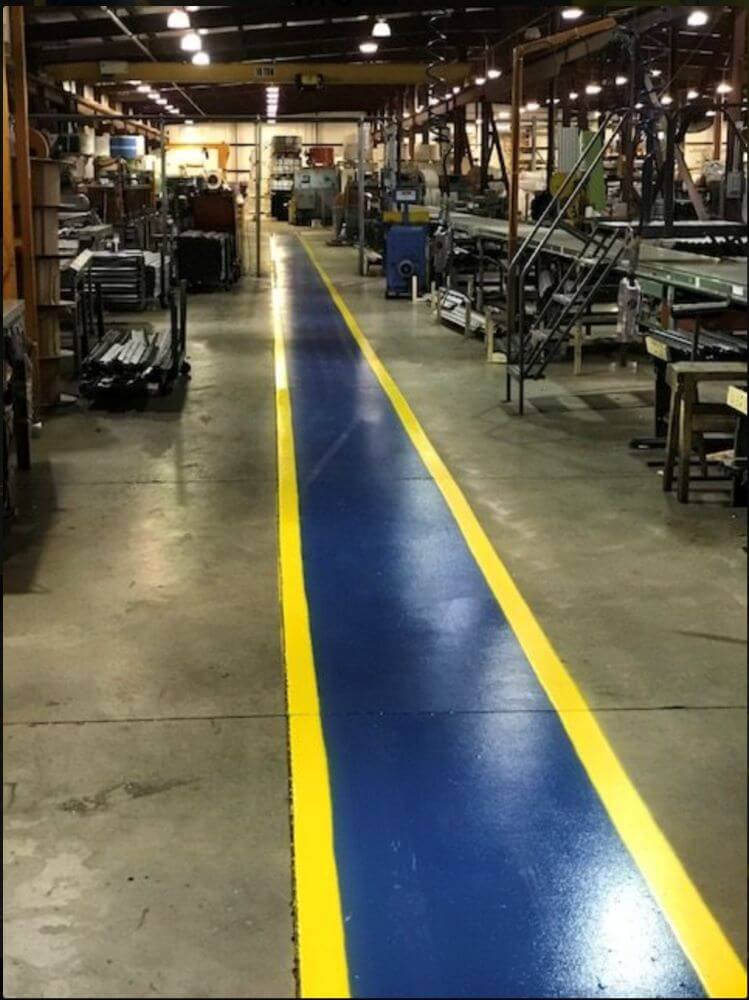
The Impact of Technology on Safety and Compliance
Advancements in technology offer new opportunities to improve warehouse safety and compliance further. Innovations such as LED strip lighting and photoluminescent markings enhance visibility, especially in low-light conditions. Virtual reality (VR) and augmented reality (AR) technologies can be used for training purposes, providing employees with realistic scenarios to understand the importance of safety practices better.
Warehouse safety is a multifaceted issue that requires diligent attention to detail and a commitment to following regulatory guidelines. OSHA’s emphasis on floor striping and clear visibility is not arbitrary; these measures are fundamental to preventing accidents and ensuring a safe working environment. Implementing effective striping and maintaining clear visibility are crucial steps in achieving OSHA compliance, enhancing employee safety, and fostering a culture of safety within the warehouse. As technology continues to evolve, warehouses have the opportunity to adopt innovative solutions that further enhance safety and compliance. Ultimately, the goal is to create a workspace where safety is integrated into every aspect of operations, protecting employees and ensuring smooth, efficient workflows.
